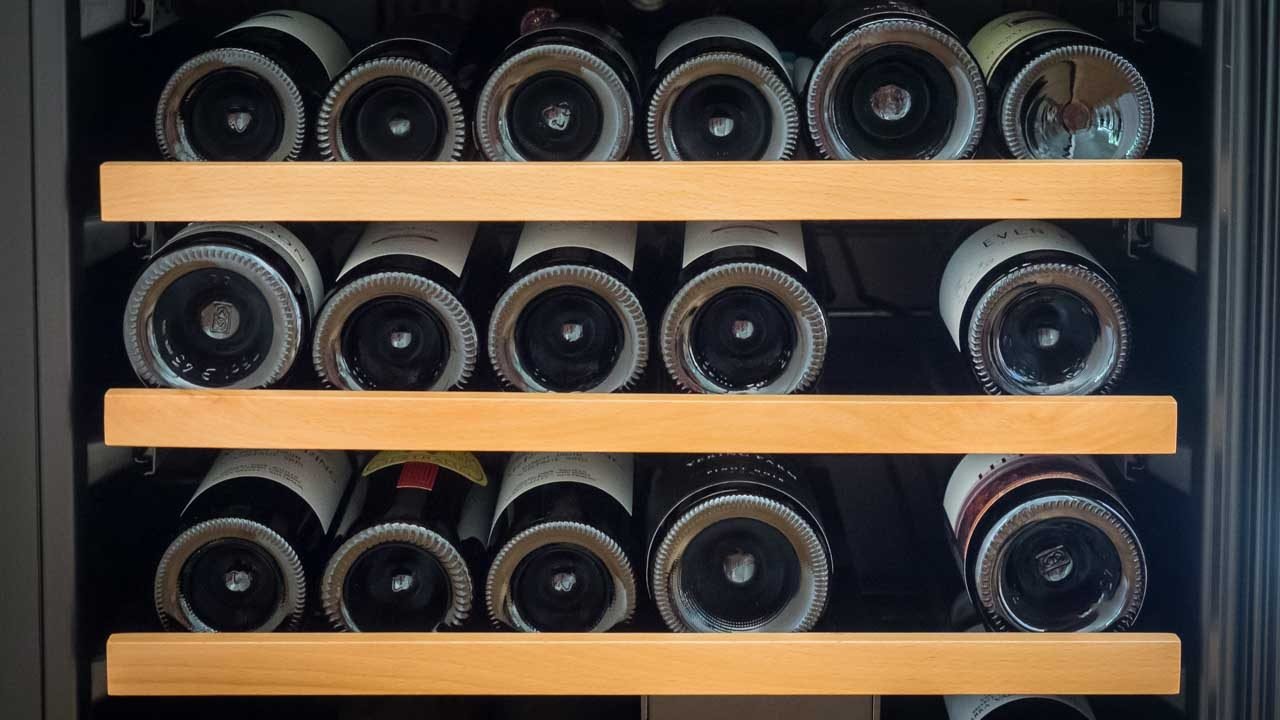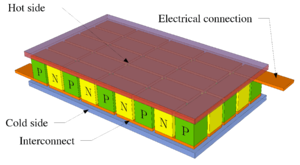An easy mistake?
I once stored a vintage bottle of Yarra Yering’s Red Wine No1 in a cupboard over the fridge for two years. You know, that place that any and every wine buff will tell you not to store your precious bottles? The heat from the back of the fridge kept the wine at a relatively constant temperature, but unfortunately it was significantly higher than the ideal 10-15 degrees C (50 and 59 degrees F). When I finally opened it, the wine was ‘cooked’. It tasted like a caramelised sweet sherry. Delicious sweet sherry mind you, but clearly not what the winemaker had in mind when they were blending the brew! I also suspect that I got lucky and it would have been just as likely that I ended up with a bottle of vinegar.
Dinner party folly
Following that incident I endeavoured to look after my bottles better, but I have still been guilty of storing wine in any old cupboard that would fit them. This has also led to us “losing” a couple of bottles which we bought for cellaring, as part way through a dinner party I’ve reached for another bottle from ‘the shelf’. “Shall we open just one more darling?” and a few days later have been unable to find our precious vintage we were saving for my 50th!
Following that incident we both decided it was time to invest in a wine fridge – preferably with a lock on it! This would ensure that our bottles are kept at a constant ideal temperature. Wines for drinking could also be kept separate from those meant for long term cellaring.
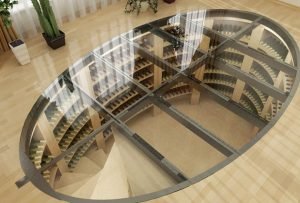 There are a growing variety of options for keeping your plonk in perfect condition in the modern world. We’d love to have something like this Maxi Oval underground wine cellar from Helicave in Europe. However, we live in a 2 bedroom apartment in Port Melbourne and I’m not sure the landlord would appreciate it! So we were looking for something a bit more appropriate.
There are a growing variety of options for keeping your plonk in perfect condition in the modern world. We’d love to have something like this Maxi Oval underground wine cellar from Helicave in Europe. However, we live in a 2 bedroom apartment in Port Melbourne and I’m not sure the landlord would appreciate it! So we were looking for something a bit more appropriate.
Wine Storage
There are a few things to consider when looking at long term cellaring which will affect the quality of your wine:
Light
Direct sunlight and incandescent light can react with the phenolic compounds which are responsible for the colour, mouth feel and taste of the wine. This can result in flaws in the wine, so your fridge should have UV glass or be hidden away behind closed doors.
Humidity
Bottles with corks should be stored in a humid environment to prevent them from drying out. Dehydrated corks can crack allowing air into the bottle resulting in oxidation of the wine or break up when you try to open them. However, this is becoming less of an issue as more wines are making the switch to screw caps.
Vibrations
One other thing which may affect the structure of the wine is vibrations. Sediment should be settled nicely at the bottom of the bottle but can be disturbed by vibrations. This in turn can affect the quality of your wine over time. Vibrations can also increase the rate of chemical reactions which happen naturally in the wine. Though there is still a lot of debate around how much effect vibrations have, I’m not going to take the risk with my collection.
Temperature
The ideal temperature for storing wine is between 10 and 15 degrees C (50 – 59 degrees F). with red wines slightly warmer than whites. Maintaining a constant temperature is the most important thing. Changes in temperature over time can cause adverse chemical reactions, leaving you with an unexpected surprise when you crack your bottle.
There are two main methods of refrigeration:
Compressor
Like your normal kitchen fridge/freezer, this uses the compression and expansion of a refrigerant liquid to cool the air inside. The mechanics of a traditional compressor can cause vibrations. Newer model compressors which are used in some wine fridges are often billed as being “Vibration free”.
Thermoelectric
Thermoelectric fridges use some clever science to essentially suck heat across a heat exchange. The main advantage of this method is that the only vibrations come from a fan used to move the cool air around the fridge. This makes them ideal for storing wine. They are however, significantly more expensive to buy and run than the compressor type fridges.
A lucky break…
Armed with all of this information we hit the internet with a few criteria of our own:
- The fridge had to fit in the apartment without taking over
- It should hold more than just a few bottles as we’re planning on building a collection over time
- It must not cost the earth to buy or run
As it turned out we were taking a look around the closing down sale of our local hardware store and found the last wine fridge in the shop. It fitted our purposes perfectly. We also scored a heavy discount which was a great bonus!
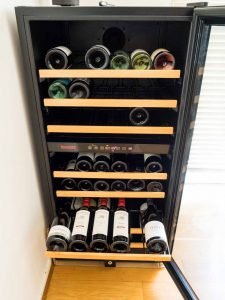
94 bottles of wine can be stored in here!
We bought the Baumatic 94 bottle wine fridge. It has a low vibration compressor which is no more noisy or expensive to run than your average kitchen fridge.
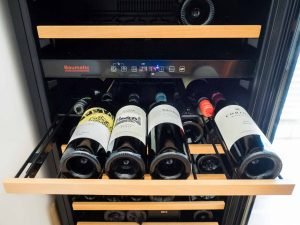
Dual zones for reds and whites/sparkling
It has two zones which can be kept at different temperatures for the different types and styles of wine and shelving which slides out for easy access to your bottles.

